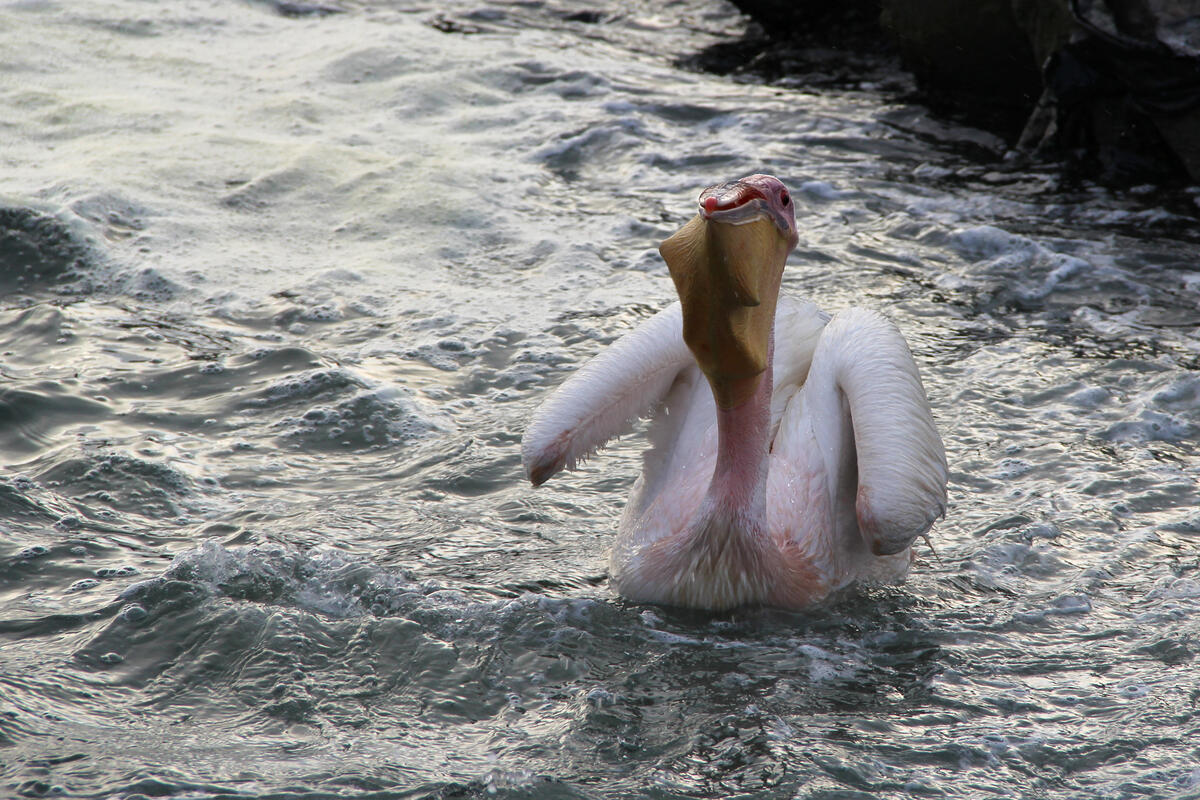Walvis Bay is a largish town positioned roughly halfway along the Namibian coastline.
Hottentot Bay and Walvis Bay
To get to Walvis Bay, Hottentot is the only anchorage on the Skeleton Coast after Lüderitz.
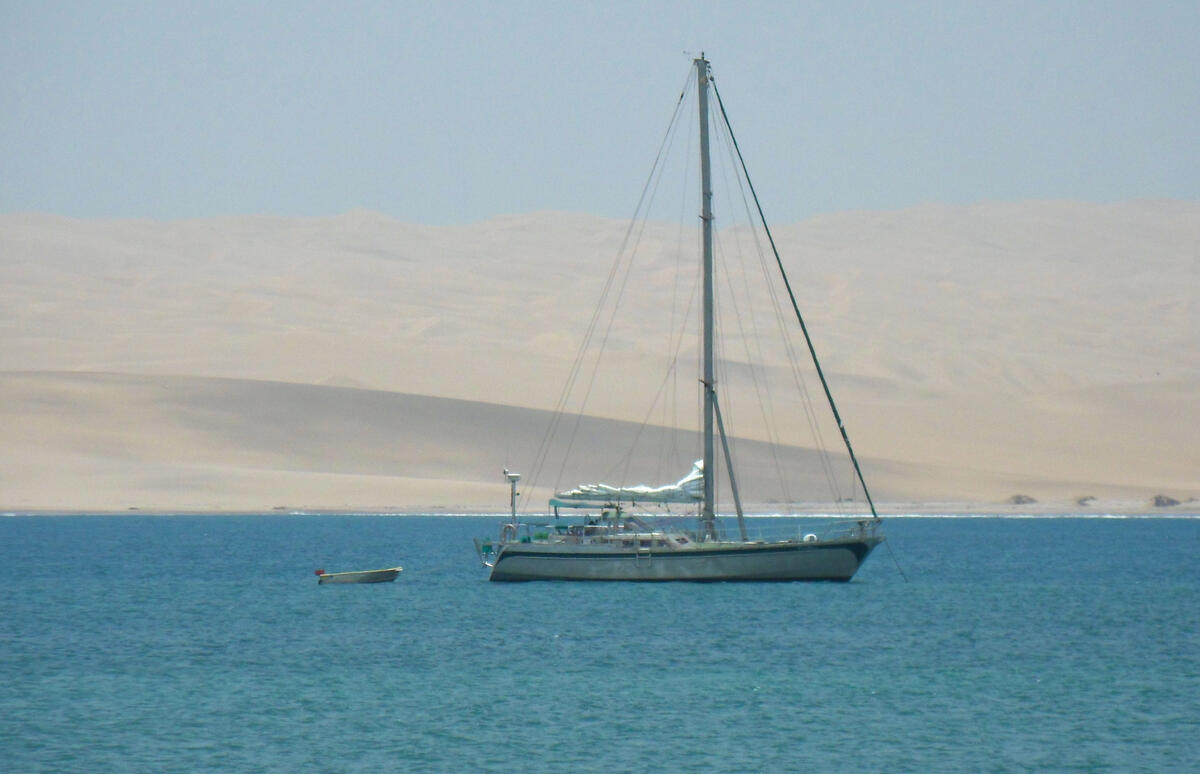
Hottentot Bay is protected from the north but now unused, an abandoned refuge in the midst of the great dunes of the Namib.
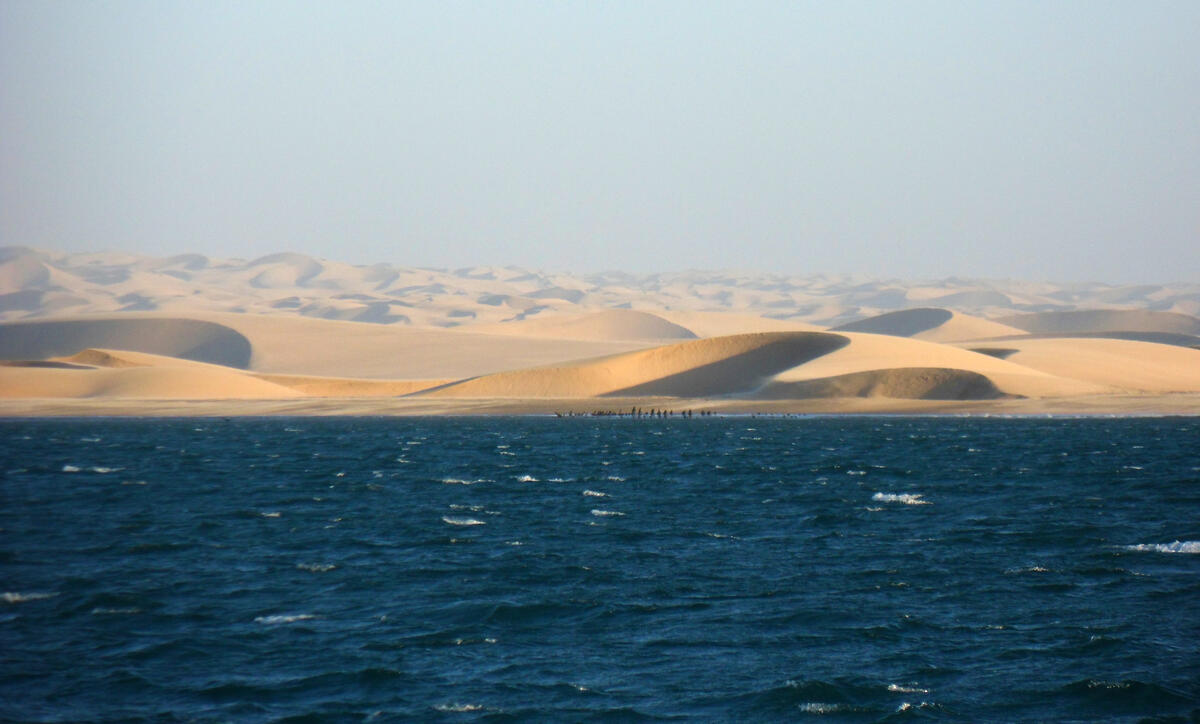
A fleet of fishing boats from Lüderitz comes for the work week to prey on the shore side reefs, trapping juvenile crayfish for the Japanese market.
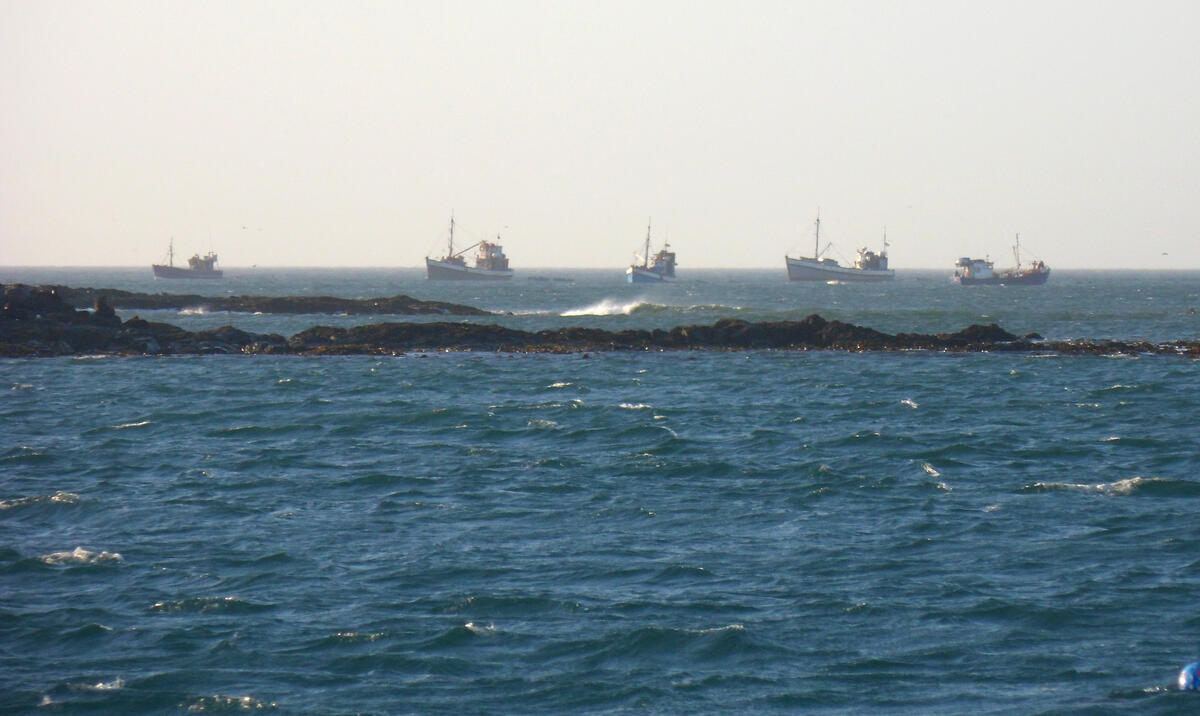
One boat appeared at our stern with the offer of a dozen crays, its crew hoping for some return trade that would add to their own diet… or, preferably, a bottle of wine.
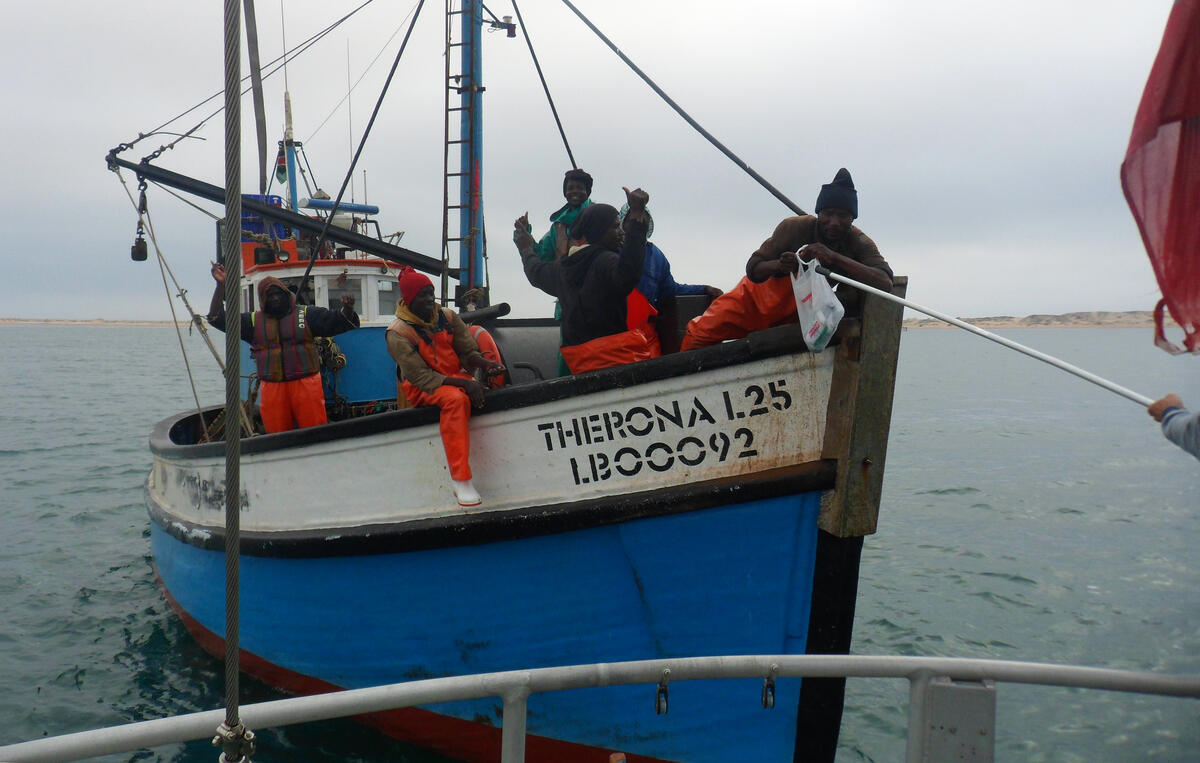
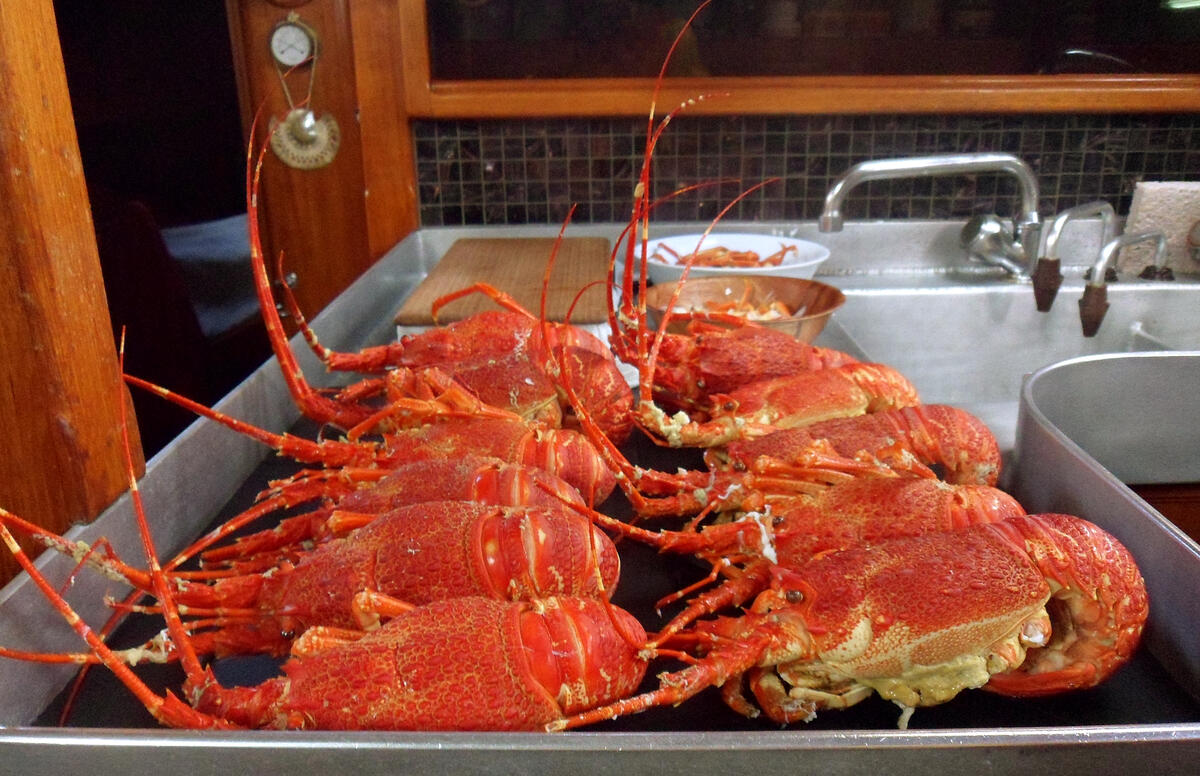
Walvis Bay, some 250 miles north of Lüderitz and inside the Tropic of Capricorn, is the largest coastal town in Namibia. The bay itself is some 36 square miles enclosed by a large low-lying north-south running sand spit, with room for ships to anchor off in protected waters until a berth is made available.
The seaside is teeming with birdlife. Here, terns feed in the bay before migrating to the Antarctic.
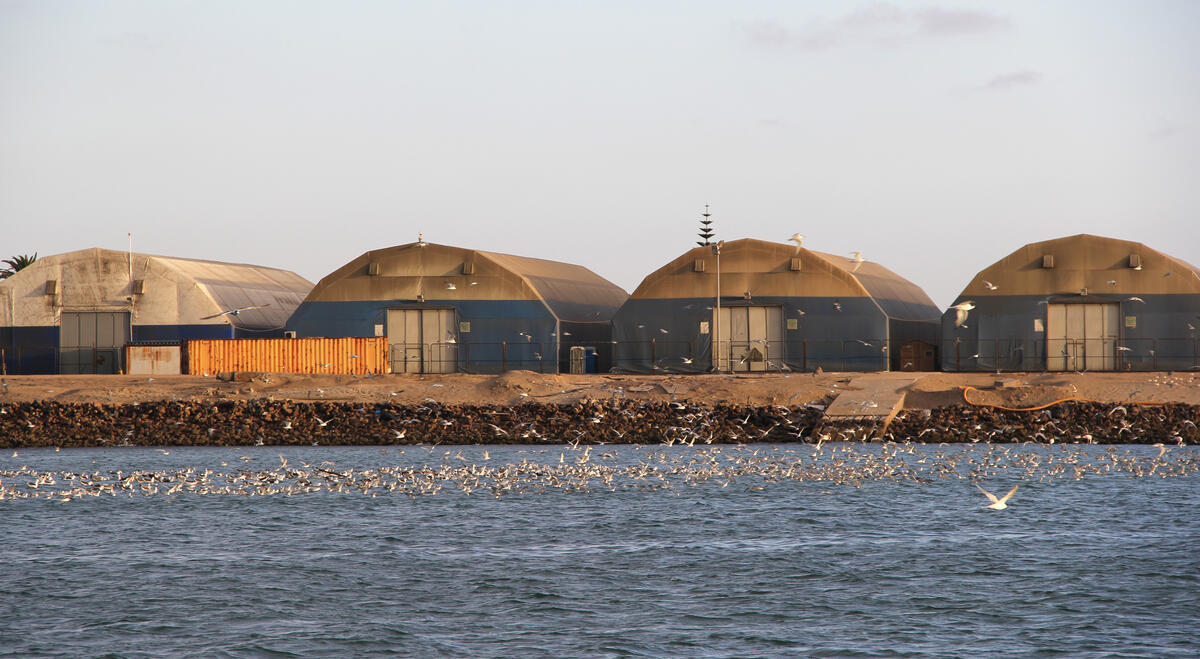
The Bay surrounds large saltings and mud flats, breeding grounds for millions of water birds from dozens of species.
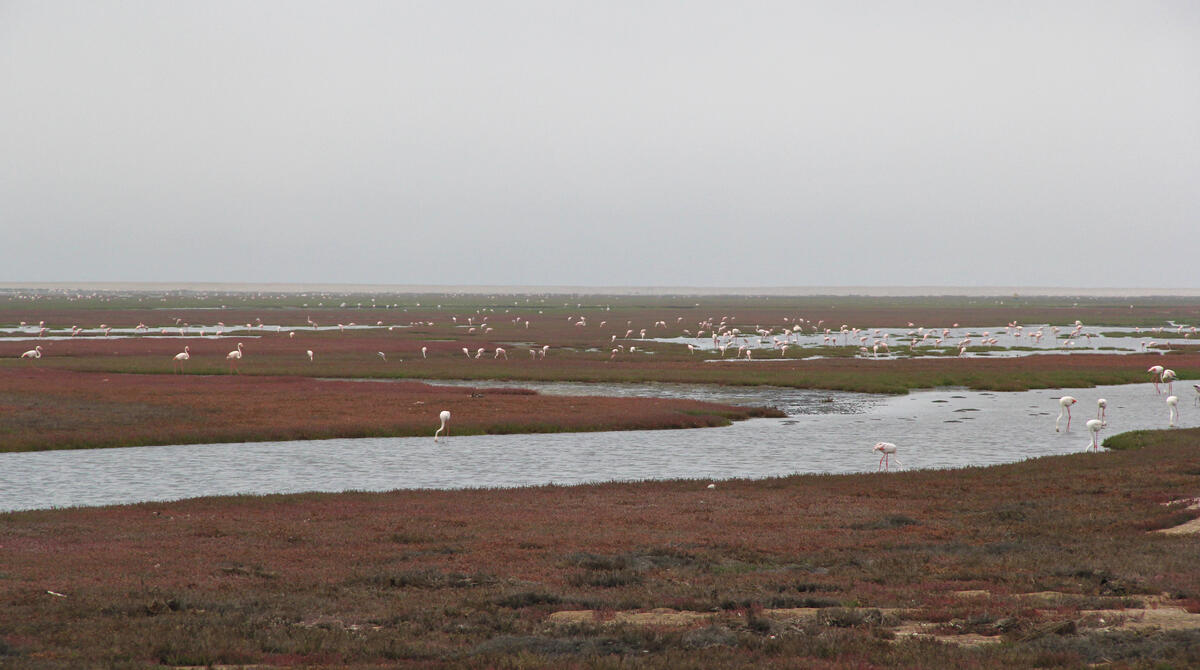
The horizon glows florescent in the afternoon sun from the thousands of pink flamingos feeding the shallows.
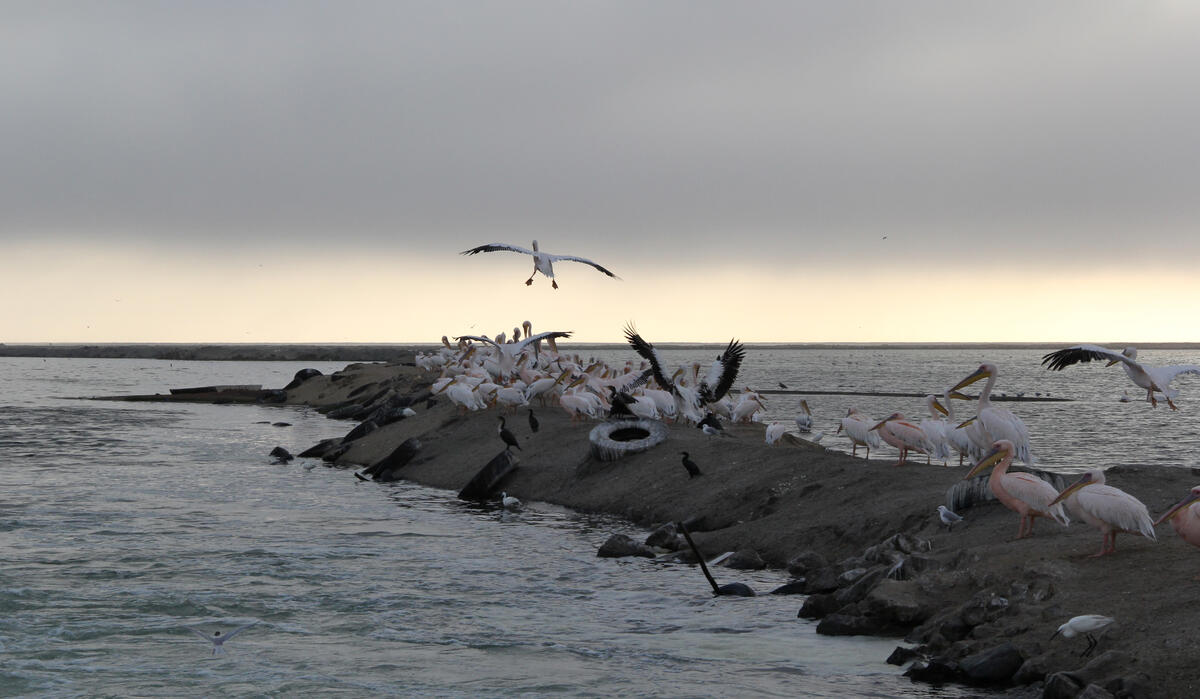
This abundant bird and sea life coupled with the wetlands pump a huge amount of natural fertilizer back into the bay waters, which promotes a soup of algae and nutrients to complete and support the cycle. At optimum water temperature, algae blooms are conjured into being, releasing sulfuric gas into the air – local letter boxes and street signs are made of plastic as steel does not last long in the acidic environment.
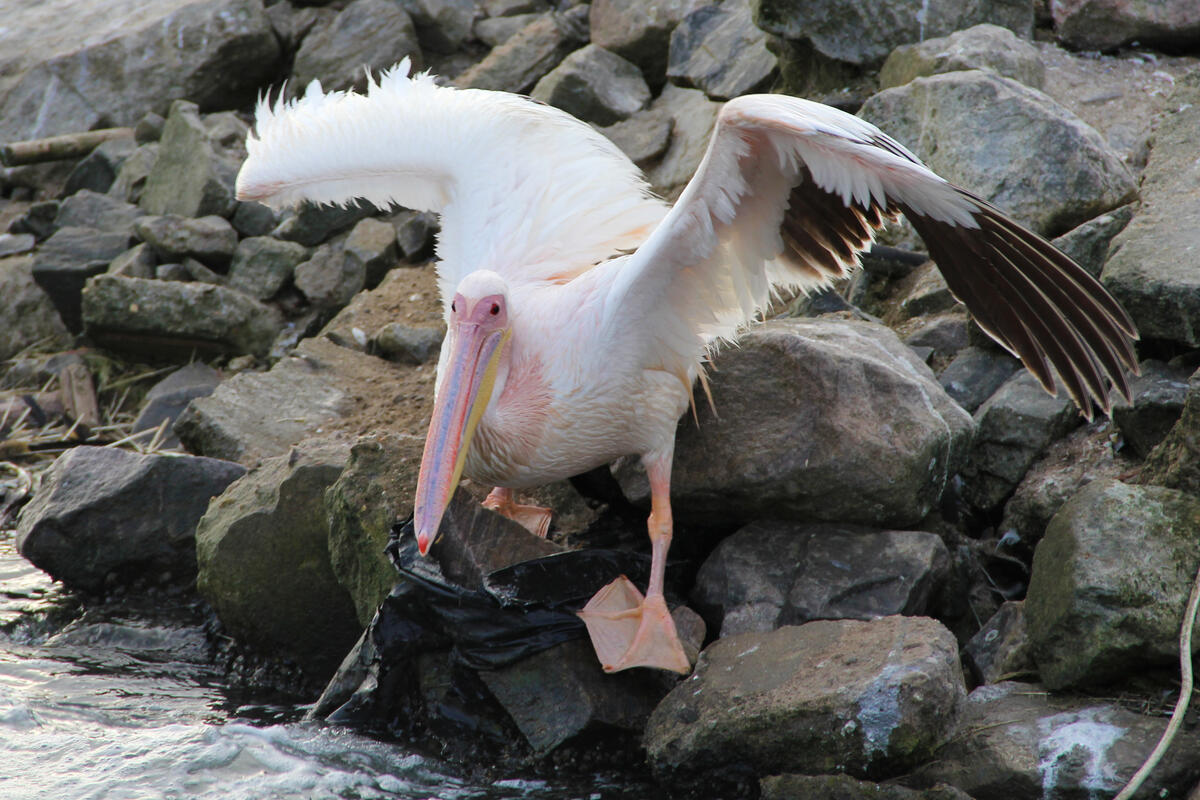
The local economy benefits greatly from the tourists and ornithologists who are drawn to this nature reserve.
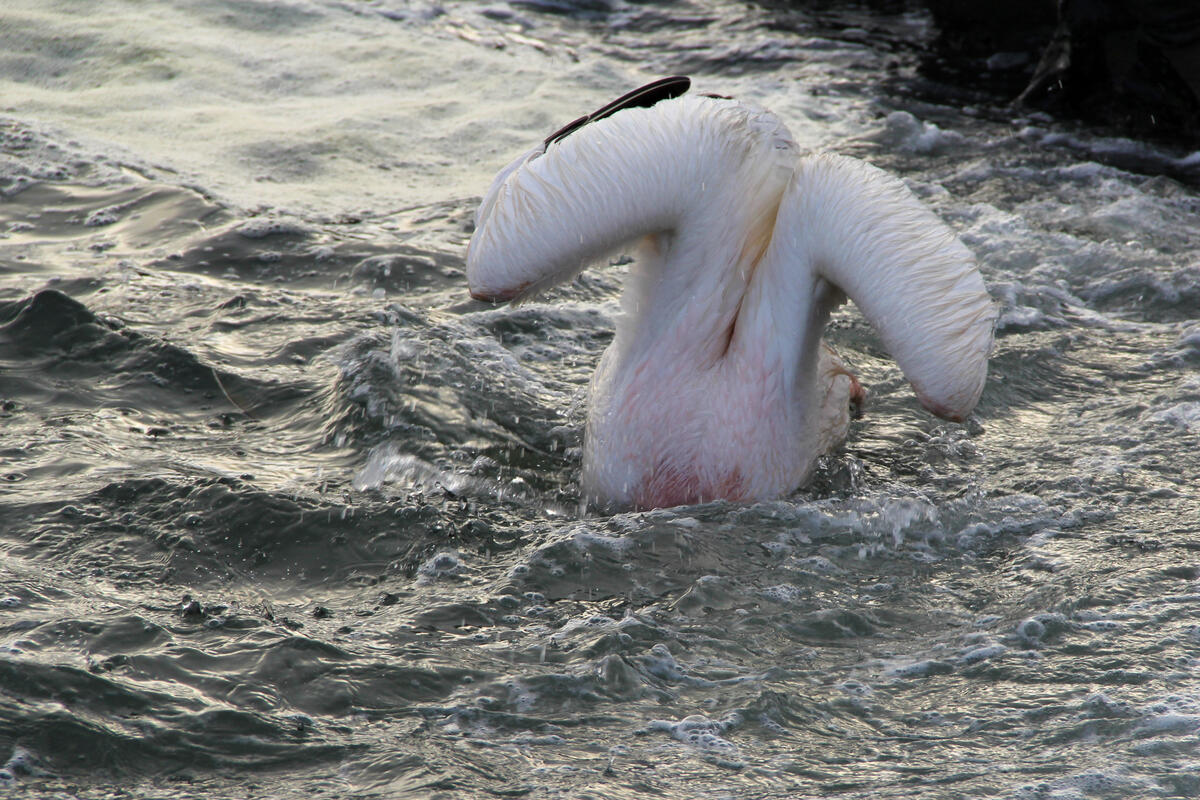
The sand spit itself also attracts wildlife from the sea, and its Point is the favorite attraction for local tour boats – with their tame pelicans in tow – on bird, whale, dolphin, and seal watching trips.
